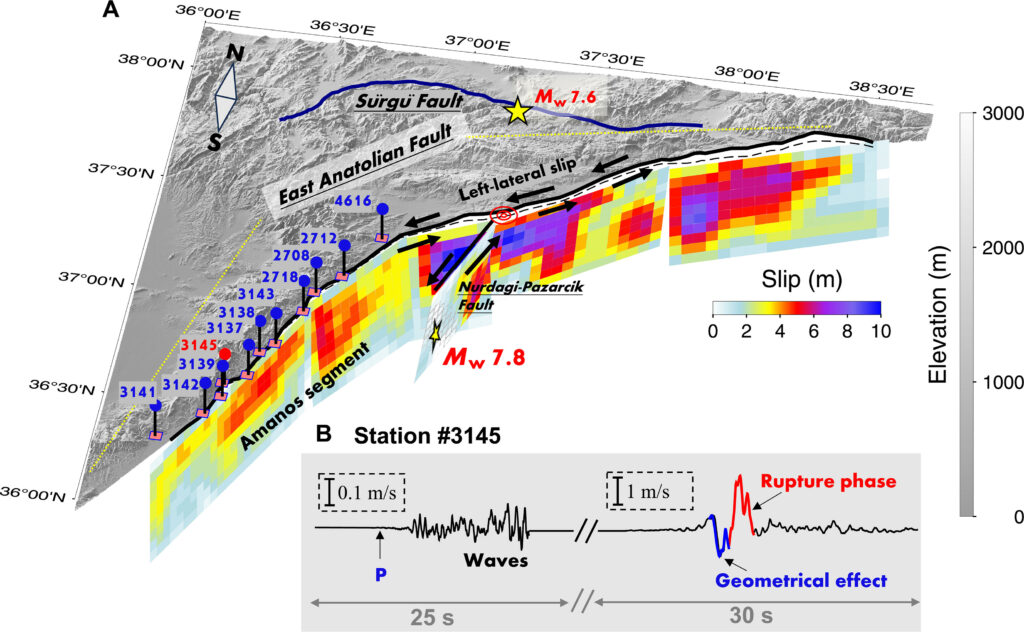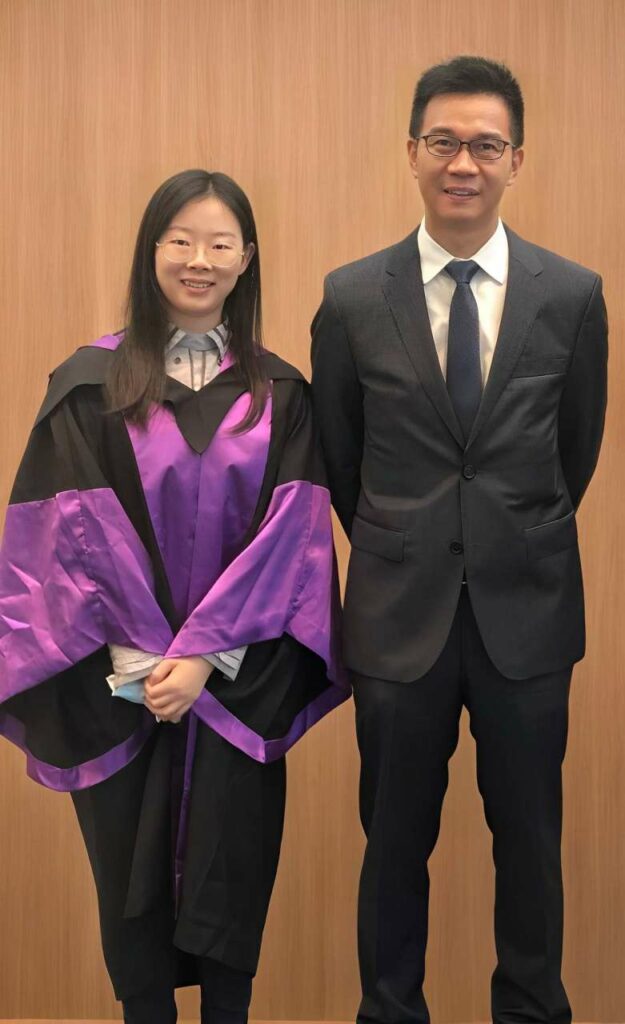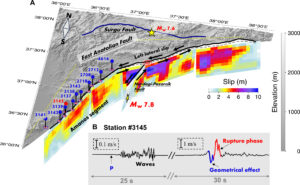CUHK
News Centre
CUHK develops world’s first near-fault data analysis method to enhance rapid assessment of earthquake magnitude and impact
Professor Yang Hongfeng and his research team at the Department of Earth and Environmental Sciences at The Chinese University of Hong Kong (CUHK) have successfully developed the world’s first near-fault data analysis method, using data from the magnitude 7.8 Turkey earthquake in 2023. This innovative research not only offers new insights into seismology but also enables swift and accurate assessment of earthquake magnitude and impact. It contributes to further development of real-time earthquake monitoring technology, enhancing rapid responses to seismic disasters. The results have been published in leading journal Science Advances.
Earthquakes pose a significant threat globally, causing destruction through powerful shaking of the ground and potential secondary hazards such as tsunamis and landslides. Due to the limited number of seismic stations, which are often located tens to hundreds of kilometres away from epicentre, researchers have to rely on complex and time-consuming inversion techniques to investigate earthquake rupture processes, leading to uncertainties. With the advancement of modern seismic network, seismic stations are gradually being placed close to faults, improving measurement accuracy. However, the amount of near-fault data is still limited, leaving a gap in research.
On 6 February 2023, a 7.8-magnitude earthquake occurred in Kahramanmaraş, Turkey. The local government released the first data recorded continuous near-fault observation data in the field, including at 10 strong-motion stations located within three kilometres away from the fault along the 150-kilometre-long southwest rupture. Despite a longstanding desire among seismologists for such near-fault observations, there has been a lack of techniques to study this type of data. Moving beyond previous studies, Professor Yang and his team studied relevant data and discovered that the near-fault waveforms can clearly reflect the timing of local fault ruptures. This enables the rapid tracking of rupture propagation process, opening up a new horizon for earthquake science.
Professor Yang said: “We analysed and identified the seismic waveform characteristics caused by the fault’s geometrical effect and quickly recognised the unique rupture phase. By analysing the rupture phases from 10 near-fault stations, we can accurately track the propagation speed of the earthquake rupture without using inversion methods.”
Describing the findings as a “dream discovery” in earthquake observation, Professor Yang emphasised the rarity of such near-fault data, with only about 20 similar data traces recorded globally over several decades. One of the highlights of this study is the unique presence of near-fault data from 10 sites for a single earthquake. “For the first time, we successfully identified the continuous rupture phases through meticulous analysis and numerical simulations, marking a significant advancement in tracking earthquake rupture propagation.”
He further noted that this innovative method can enhance more accurate assessments of the potential damage after an earthquake, which can assist governments in swiftly identifying severely impacted regions, enhancing disaster response efficiency and reducing casualties. Additionally, the study underscores the value of near-fault data, which can provide guidance for the development of future earthquake monitoring systems, improving society’s resilience in the face of seismic threats.
For the full study, please visit: https://www.science.org/doi/10.1126/sciadv.adq0154





